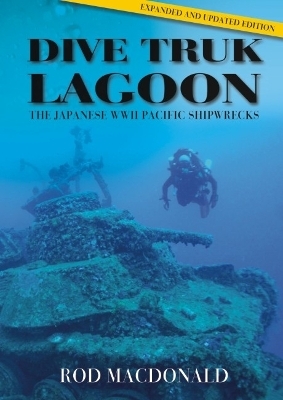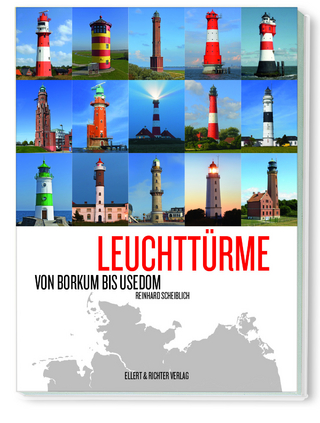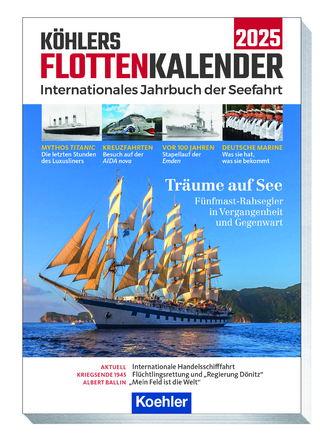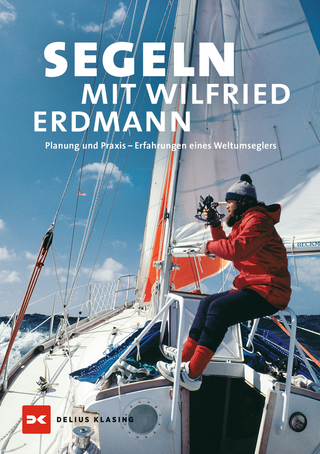
Dive Truk Lagoon, 2nd edition
The Japanese WWII Pacific Shipwrecks
Seiten
2023
|
2nd edition
Whittles Publishing (Verlag)
978-1-84995-541-6 (ISBN)
Whittles Publishing (Verlag)
978-1-84995-541-6 (ISBN)
An expanded and updated second edition of the classic dive guide. The definitive guide to diving these fabled shipwrecks.
The 50-mile wide lagoon of Truk Atoll, far out in the remote expanses of the Pacific, is quite simply the greatest wreck diving location in the world. Scores of virtually intact Japanese WWII wrecks of transport ships, still filled with cargoes of tanks, trucks, artillery, beach mines, shells and aircraft, rest in the crystal-clear waters of the lagoon - along with two Japanese destroyers and one submarine - each today a man-made reef teeming with sea life.
The seemingly impregnable fortress islands of Truk Atoll were a powerful air base and the main forward anchorage for the Imperial Japanese Navy (IJN). By 1944, the Allies were pushing westwards across the Pacific islands towards the Japanese homeland. On 4 February 1944, a daring 2,000-mile long-range U.S. reconnaissance flight revealed the Truk lagoon to be full of the might of the Imperial Japanese Navy, along with scores of large supply ships and transports. The Allies decided to attack immediately.
Sensing this, the Imperial Japanese Navy scattered, but the merchant ships remained, as crews rushed to offload their war cargoes of aircraft, tanks, artillery, mines and munitions. Other heavily laden supply ships continued to arrive from Japan, unaware of the Allied assault plans. Task Force 58, codename Operation HAILSTONE, was formed for an immediate attack. In total secrecy, nine U.S. aircraft carriers, holding more than 500 combat aircraft, steamed towards Truk - supported by a screen of battleships, cruisers, destroyers and submarines.
At dawn on 17 February 1944, an initial fighter sweep of Truk by 72 F6F Hellcat fighters roared in over Truk under Japanese radar - catching the Japanese by complete surprise. The Hellcats immediately began strafing Japanese airfields and soon hundreds of aircraft were involved in one of the largest aerial dogfights of WW II. The F6F Hellcat was by now vastly superior to the Japanese Zero fighter, and the Japanese planes were shot out of the sky within an hour. With air superiority established, U.S dive-bombers and torpedo-bombers spent two days sinking all the large ships trapped in the lagoon.
These sunken ships, with their war cargoes, were largely forgotten about until 1969, when Jacques Cousteau located and filmed many of the wrecks. The resulting TV documentary, Lagoon of Lost Ships, went viral. Truk's secret was out - and the beautiful wrecks, untouched since WWII, have proved an irresistible lure for thousands of divers each year since then.
New illustrations of most of the previously unillustrated wrecks have now been specially created to make this book the most comprehensive guide to diving Truk Lagoon that has ever been produced.
The 50-mile wide lagoon of Truk Atoll, far out in the remote expanses of the Pacific, is quite simply the greatest wreck diving location in the world. Scores of virtually intact Japanese WWII wrecks of transport ships, still filled with cargoes of tanks, trucks, artillery, beach mines, shells and aircraft, rest in the crystal-clear waters of the lagoon - along with two Japanese destroyers and one submarine - each today a man-made reef teeming with sea life.
The seemingly impregnable fortress islands of Truk Atoll were a powerful air base and the main forward anchorage for the Imperial Japanese Navy (IJN). By 1944, the Allies were pushing westwards across the Pacific islands towards the Japanese homeland. On 4 February 1944, a daring 2,000-mile long-range U.S. reconnaissance flight revealed the Truk lagoon to be full of the might of the Imperial Japanese Navy, along with scores of large supply ships and transports. The Allies decided to attack immediately.
Sensing this, the Imperial Japanese Navy scattered, but the merchant ships remained, as crews rushed to offload their war cargoes of aircraft, tanks, artillery, mines and munitions. Other heavily laden supply ships continued to arrive from Japan, unaware of the Allied assault plans. Task Force 58, codename Operation HAILSTONE, was formed for an immediate attack. In total secrecy, nine U.S. aircraft carriers, holding more than 500 combat aircraft, steamed towards Truk - supported by a screen of battleships, cruisers, destroyers and submarines.
At dawn on 17 February 1944, an initial fighter sweep of Truk by 72 F6F Hellcat fighters roared in over Truk under Japanese radar - catching the Japanese by complete surprise. The Hellcats immediately began strafing Japanese airfields and soon hundreds of aircraft were involved in one of the largest aerial dogfights of WW II. The F6F Hellcat was by now vastly superior to the Japanese Zero fighter, and the Japanese planes were shot out of the sky within an hour. With air superiority established, U.S dive-bombers and torpedo-bombers spent two days sinking all the large ships trapped in the lagoon.
These sunken ships, with their war cargoes, were largely forgotten about until 1969, when Jacques Cousteau located and filmed many of the wrecks. The resulting TV documentary, Lagoon of Lost Ships, went viral. Truk's secret was out - and the beautiful wrecks, untouched since WWII, have proved an irresistible lure for thousands of divers each year since then.
New illustrations of most of the previously unillustrated wrecks have now been specially created to make this book the most comprehensive guide to diving Truk Lagoon that has ever been produced.
Rod is one of the world's pre-eminent shipwreck explorers and an international best-selling author of a number of classic shipwreck diving books. His books about his diving adventures around the world include Dive Palau; Into the Abyss,diving to adventure in the liquid world; The Darkness Below; Great British Shipwrecks and Force Z Shipwrecks of the South China Seas.
| Erscheinungsdatum | 22.12.2023 |
|---|---|
| Zusatzinfo | liberally illustrated with b/w and colour photos |
| Verlagsort | Caithness |
| Sprache | englisch |
| Maße | 170 x 240 mm |
| Themenwelt | Natur / Technik ► Fahrzeuge / Flugzeuge / Schiffe ► Schiffe |
| Sachbuch/Ratgeber ► Sport ► Segeln / Tauchen / Wassersport | |
| Geschichte ► Allgemeine Geschichte ► 1918 bis 1945 | |
| Geschichte ► Teilgebiete der Geschichte ► Militärgeschichte | |
| ISBN-10 | 1-84995-541-7 / 1849955417 |
| ISBN-13 | 978-1-84995-541-6 / 9781849955416 |
| Zustand | Neuware |
| Informationen gemäß Produktsicherheitsverordnung (GPSR) | |
| Haben Sie eine Frage zum Produkt? |
Mehr entdecken
aus dem Bereich
aus dem Bereich
internationales Jahrbuch der Seefahrt
Buch | Softcover (2024)
Koehler in Maximilian Verlag GmbH & Co. KG
23,95 €
Planung und Praxis ; Erfahrungen eines Weltumseglers
Buch | Hardcover (2024)
Delius Klasing (Verlag)
39,90 €


